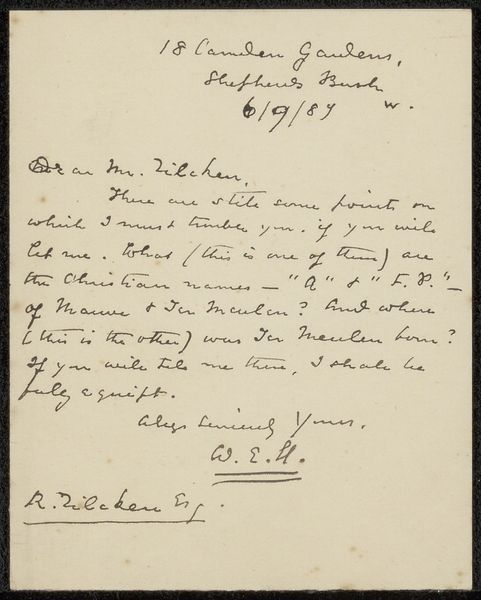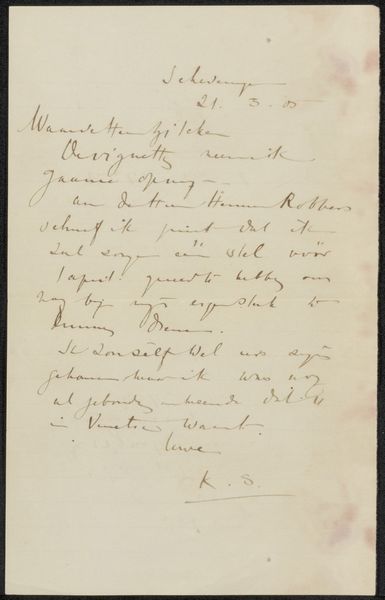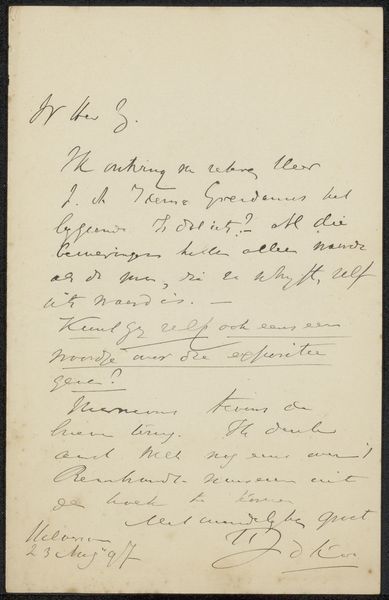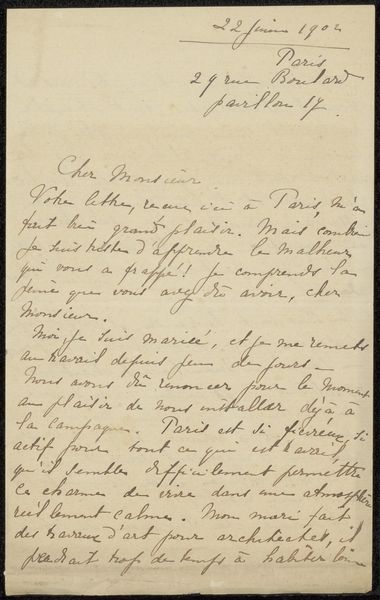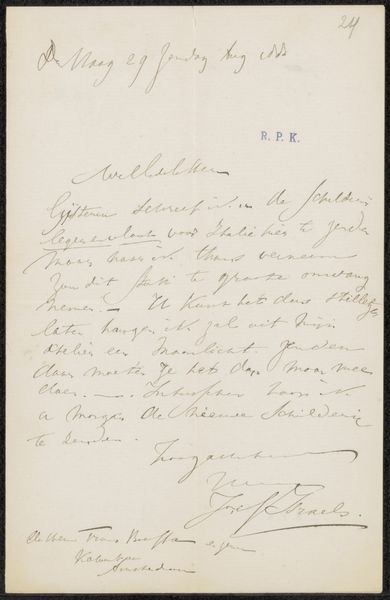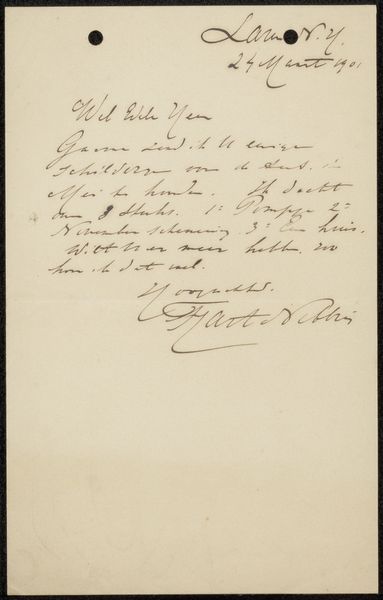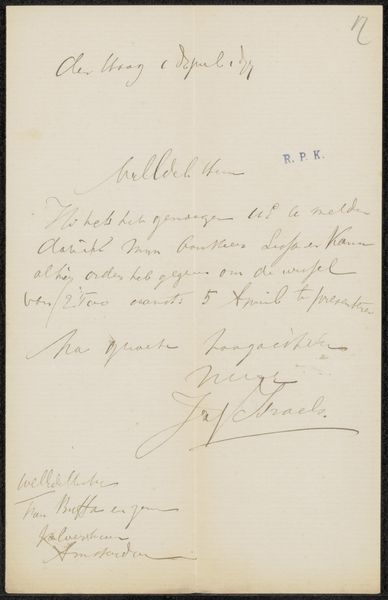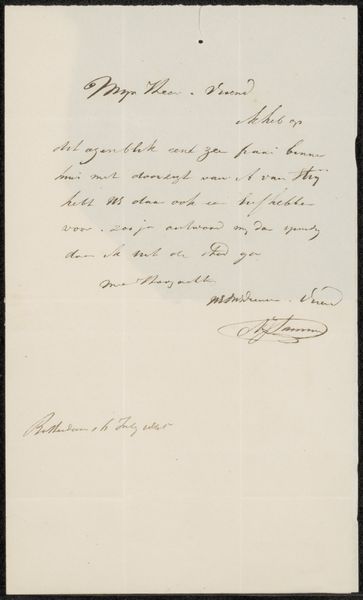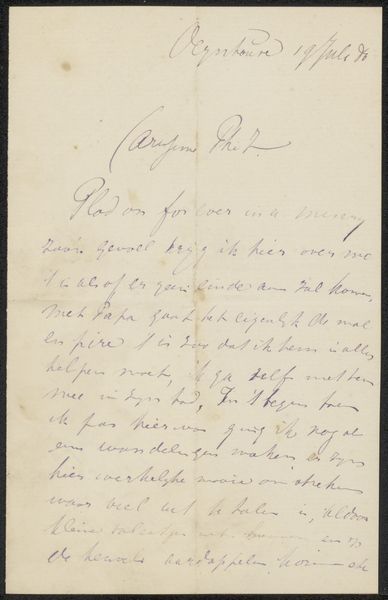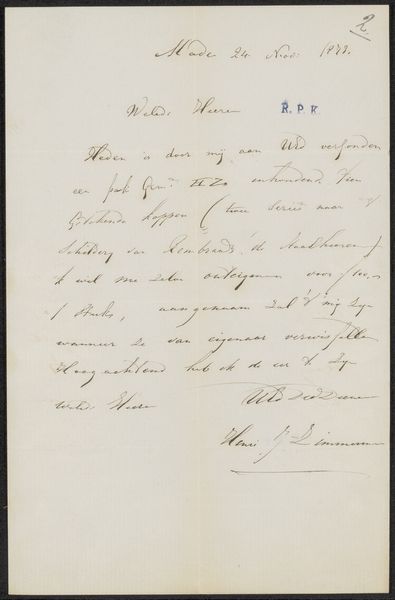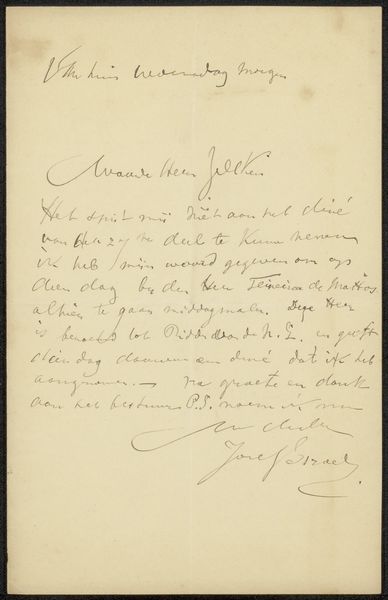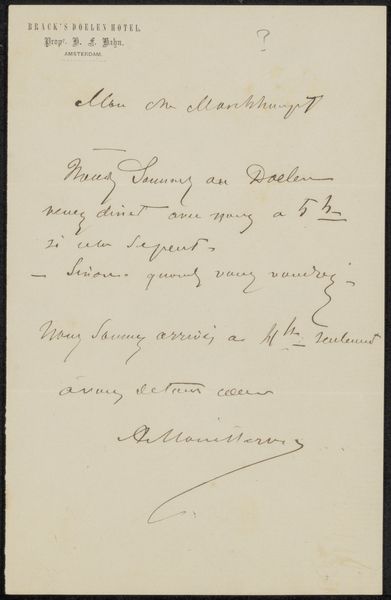
drawing, ink, pen
#
drawing
#
thin stroke sketch
#
pen sketch
#
hand drawn type
#
personal sketchbook
#
ink
#
idea generation sketch
#
ink drawing experimentation
#
pen-ink sketch
#
pen work
#
sketchbook drawing
#
pen
#
sketchbook art
Copyright: Rijks Museum: Open Domain
Editor: This ink drawing from 1881 is titled "Kwitantie voor Maria Bilders-van Bosse," made by Frans Buffa en Zonen. It looks like a handwritten receipt. The script is quite beautiful but hard to read. What story can we unravel from this piece of paper? Curator: What strikes me is the simple fact that this is a financial document related to a woman artist. Receipts, often overlooked ephemera, offer glimpses into the economic realities faced by female artists in the 19th century. Consider the structures of patronage and the art market that dictated how Maria Bilders-van Bosse received payment. Was it commensurate with her male peers? What were the payment terms? This single sheet alludes to the financial transactions underlying the art world, a world that often obscured the contributions and economic challenges faced by women artists. Editor: So, it's more than just a receipt. It highlights gender disparities within the art world. Curator: Precisely. The delicate script almost romanticizes a financial exchange, obscuring potential power dynamics. Were these fair transactions, or did societal expectations influence the monetary value assigned to her work? Further, thinking about how 'feminist economics' impacts this simple drawing transforms it into a document about societal norms and labour relations. What kind of societal message can we extract from such a seemingly ordinary artifact? Editor: It's fascinating to think about a simple receipt in terms of gender, labour, and economic systems! I'll never look at financial documents the same way. Curator: Exactly! Everyday items can open our eyes to larger cultural conversations, revealing how art intersects with gender, economics, and history.
Comments
No comments
Be the first to comment and join the conversation on the ultimate creative platform.
